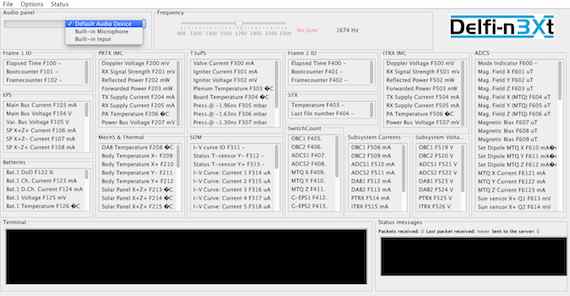The DNEPR launch was/is a success.
The launch as you can see in this Youtube movie below was a success, the launch took place at 07:10 UTC from the Dombarovskiy facility.
Just a couple of minutes after the launch signals where received from FUNcube-1, these came from Amateur Radio Stations in South Africa and they filled the FUNcube-1 data warehouse for the first time.
My first pass was at 08:46 UTC and I had to make up my mind on with cubesats to track. I finally choose for monitor and record a frequency span between 437.350 – 437.540. In the middle of this span would CubeBUG-2 transmit its data. In meantime listen to Delfi-n3Xt at 145.870. When the pass started it was a overwhelming. Delfi-n3Xt pass coming via the VHF Icom 910H and the 192khz span of the FUNcube Dongle Pro+ showed a lot of signals being received. I wasn’t able to decode any 2400 baud BPSK signal from Delfi-n3Xt but after the pass when I analysed the IQ file that was recorded with SDR# I could decode signals from ZAcube-1, UWE-3 and CubeBUG-2.
The following frames are decoded from a recorded SDR IQ file, therefor the timestamps are of.
ZAcube-1 1k2 decode:
2013-11-21 09:11:07.750 UTC: [47 Bytes KISS Frame (without CRC)]
ctrl: 12 PID: F0 {I06^} 26 Payload Bytes
from 123456 to 012345:
1 > DC 0C 16 7A 61 63 75 62 65 30 31 2E 00 00 13 09 2C 0A DC 2C
21 > 06 7B 2C 0C 2E DC
Ü..zacube01.....,.Ü,.{,..Ü
UWE-3 9k6 decode:
2013-11-21 14:47:59.380 UTC: [60 Bytes KISS Frame (without CRC)]
ctrl: 3 PID: F0 {UI} 41 Payload Bytes
from DP0UWG to DD0UWE:
1 > 00 53 20 64 64 59 B3 21 02 FC 14 6A 13 00 00 18 6A 86 F4 42
21 > 59 5E 34 10 07 00 17 58 10 1F 00 17 36 01 F5 FD DE E8 F4 F5
41 > DC
.S ddY³!.ü.j....j†ôBY^4....X....6.õýÞèôõÜ
CubeBUG-2 9k6 decode:
2013-11-21 14:59:10.800 UTC: [98 Bytes KISS Frame (without CRC)]
ctrl: 3 PID: F0 {UI} 78 Payload Bytes
from CUBEB2-6 to CQ:
1 > FF FF F0 00 00 14 CA 00 00 01 03 00 00 00 00 00 00 3D E0 00
21 > 00 00 00 AF 00 01 00 CA 1E 77 03 F7 02 C9 03 FF 03 FF 02 D9
41 > 02 B6 03 FF 03 3F 03 B6 03 C4 0A C7 05 01 C5 AA 19 F8 FB B8
61 > 03 DB FD DD FF 65 09 47 02 51 E3 8A FF 6C 00 00 00 00
ÿÿð...Ê..........=à....¯...Ê.w.÷.É.ÿ.ÿ.Ù.¶.ÿ.?.¶.Ä.Ç..Ū.øû¸.ÛýÝÿe.G.QãŠÿl....
In a later pass also an APRS message from CubeBUG-2:
1:Fm CUBEB2-6 To CQ [13:34:56R] :EMAIL :manolito@satellogic.com Upt: 04:41:43 Bat:7.90v Temp:27.6C Gyr:87.77d/s
So far so good, I have 2Gb of IQ data that can be analyzed. This is what I can tell so far, the launch is a success and there are some teams that are still searching for there satellites. Good luck all, I’ll point my antenna’s to the sky when I am able to.
After analyzing the IQ files I also saw the data from Humsat-D, very strong 1200 baud GMSK data and Morse code, modulation type FM. Very difficult to decode the CW data. It is time I learned CW because the Computer isn’t able to decode the data.
Below an image with from left to right: HumSat-D CW, ZAcube 1k2 AFSK and UWE-3 9k6 FSK.
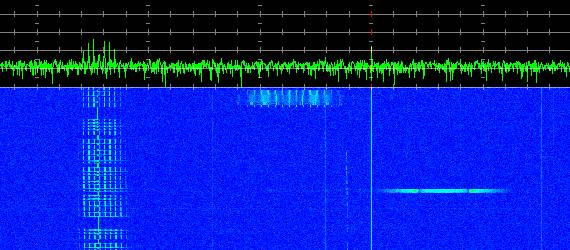

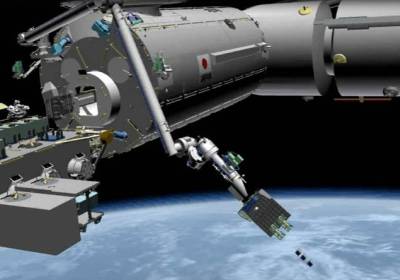 The cubesats: Pico Dragon, Ardusat-1 and Ardusat-X are successfully launch from the Japanese Kibo module. TechEdsat will be launched tomorrow from the same module.
The cubesats: Pico Dragon, Ardusat-1 and Ardusat-X are successfully launch from the Japanese Kibo module. TechEdsat will be launched tomorrow from the same module.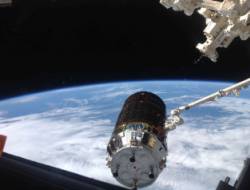 With al the attention going towards the Dnepr launch on November 21 we would almost forget that there are a couple of Cubesats onboard the ISS that will be launched also. The launch is planned for November 25. The following satellites will be deployed.
With al the attention going towards the Dnepr launch on November 21 we would almost forget that there are a couple of Cubesats onboard the ISS that will be launched also. The launch is planned for November 25. The following satellites will be deployed.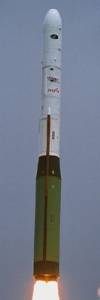 The rocket will launch the Air Force’s Operationally Responsive Space Office’s ORS-3 mission, which features the deployment of 29 satellites in space. The launch window is 00:30 to 02:30 UTC The backup launch days run through November 26.
The rocket will launch the Air Force’s Operationally Responsive Space Office’s ORS-3 mission, which features the deployment of 29 satellites in space. The launch window is 00:30 to 02:30 UTC The backup launch days run through November 26.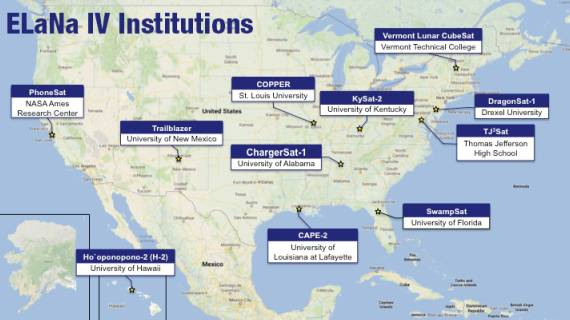
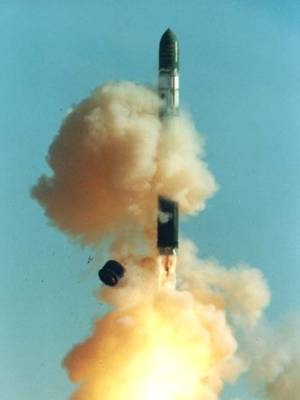 Here some information regarding the upcoming Dnepr launch. At the moment the launch date is set to 21th November 2013. With this launch there will be flying at least two Cubesats with linear transponder functionality. The launch will be done at the
Here some information regarding the upcoming Dnepr launch. At the moment the launch date is set to 21th November 2013. With this launch there will be flying at least two Cubesats with linear transponder functionality. The launch will be done at the 
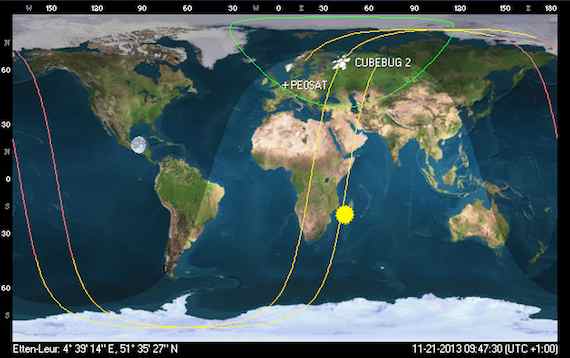
 Update, urgent message: 14-11-2013
Update, urgent message: 14-11-2013
